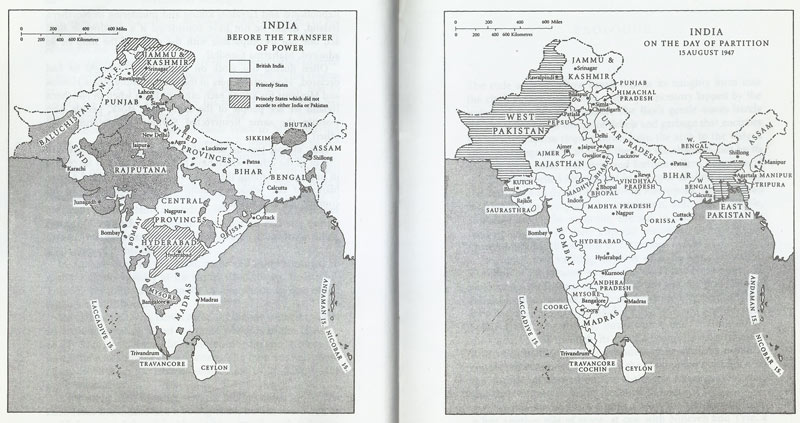"The Forking of The Indian Rupee"
From Moneyness:

This post is about the dismantling of the rupee-zone between 1947-49, an
historical event that is especially topical in light of two modern
monetary projects: Narendra Modi's poorly-executed 2016 demonetization
and a potential eurozone breakup.
Thanks to a recommendation by Amol Agrawal, who blogs at the excellent Mostly Economics, I've been pecking away at the 900-page history
of the Reserve Bank of India, although I have to confess that I've
spent most of my time on the chapter on the partition period. For those
who don't know, India and Pakistan weren't always independent countries.
Up until partition in August 1947, each was part of British India, a
British colony. The rupee, which was issued by the Reserve Bank of India
(RBI), was the sole medium of exchange in British India. By mid-1949,
less than two years after partition, usage of RBI-issued rupees had been
successfully limited to the newly-created state of India. As for
Pakistan, it had managed to erect its own central bank, the State Bank
of Pakistan, as well as introduce a new currency, the Pakistani rupee.
At the time of partition, Pakistan's architects faced a daunting challenge; given that the Brits had announced in early 1947
that the partition of British India was to occur that August, there
remained only a few months to create a central bank and issue a new
currency. Because printing enough new currency for an entire nation
would take far more than a few months to achieve, a temporary solution
was arrived at: to use the RBI as an interim agent for issuing currency
until the new Pakistani central bank had its own printing presses up and
running.
This "bridge" involved using a combination of regular RBI-issued rupees
circulating within Pakistan at the time and "overprinted" notes issued
by the RBI. To ensure that the purchasing power of the two rupees stayed
locked, the overprints were to be accepted by the RBI at par with
regular notes. When enough Pakistani rupees had been printed by the
newly-created State Bank of Pakistan, or the SBP, the mix of India
rupees and overprinted notes was to be demonetized and replaced by
Pakistani rupees on a 1:1 basis.
Here is what the Pakistani overprints looked like.

Note that they have the text "GOVERNMENT OF PAKISTAN" inscribed on them.
Otherwise, overprints were just like regular rupees of the time....MUCH MORE

